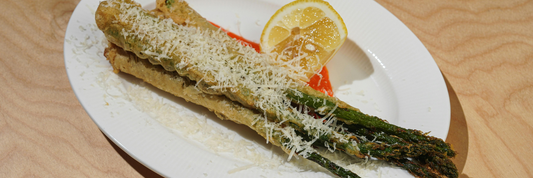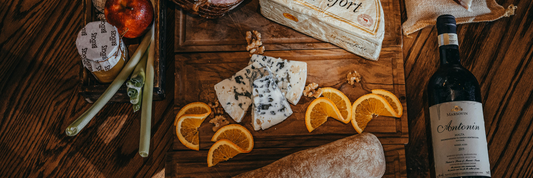The success of your takeout or delivery business often comes down to the details that customers notice most. While flavor matters, the container holding that delicious soup plays a crucial role in maintaining temperature, preventing spills, and creating a positive dining experience. A poorly chosen cup can turn hot soup into lukewarm disappointment, while the right one keeps food at optimal temperature and showcases your brand's commitment to quality.
Food businesses lose customers daily due to packaging failures - soggy containers, burned fingers from hot cups, or lids that pop off during transport. The soup cup you choose directly impacts customer satisfaction, repeat business, and even your environmental footprint. Whether you're running a food truck, managing a restaurant chain, or starting a delivery-only operation, understanding your soup cup options is essential for long-term success.
- 7 Best Soup Cups To Go That Keep Your Food Hot and Your Business Greener
- Are Soup Cups Microwavable? A Guide to Safety, Materials & Sustainability
- Soup Cup Sizes Explained: Choose the Right Size for Your Menu
1. Paper Soup Cups – Affordable and eco-friendly solution
Paper soup cups represent the most common choice for budget-conscious food businesses. These single-wall containers typically feature a polyethylene (PE) or polylactic acid (PLA) coating that prevents liquid from soaking through the paper material. The coating creates a moisture barrier while maintaining the cup's structural integrity during service.
Pros:
- Lightweight and printable - Easy to transport in bulk quantities and perfect for custom branding with your logo, colors, and messaging
- Cost-effective and widely available - Lowest price point among all soup cup options, with suppliers readily available nationwide
- Compostable if lined with PLA - Plant-based PLA coating breaks down in commercial composting facilities, appealing to environmentally conscious customers
Cons:
The main limitation involves heat sensitivity. Paper cups may soften when exposed to very hot soups for extended periods, especially those with high oil content. This softening can compromise the cup's shape and make it uncomfortable for customers to hold.
Best for: Fast food restaurants, food trucks, and small takeout vendors operating on tight margins. These businesses benefit most from the low cost and quick availability, especially when soup temperatures stay moderate and consumption happens relatively quickly after purchase.
From my experience visiting various food trucks, I've noticed successful vendors often pair paper cups with cardboard sleeves for hot soups, creating an affordable solution that protects customers' hands while maintaining cost efficiency.

2. Compostable Soup Cups – Green choice for sustainable businesses
Compostable soup cups use materials like bagasse (sugarcane fiber), cornstarch, or PLA-based compounds that naturally break down in commercial composting environments. These cups represent a significant step forward in sustainable packaging, offering businesses a way to serve hot foods while minimizing environmental impact.
Pros:
- Biodegradable and compostable in commercial composting facilities - Breaks down into organic matter within 90-180 days under proper composting conditions
- Heat-resistant and suitable for oily, hot soups - Maintains structural integrity even with high-temperature, oil-based broths and thick soups
- Strong eco-friendly brand appeal - Attracts environmentally conscious customers and supports sustainable business positioning
Cons:
The primary drawback is cost. Compostable cups typically cost 15-30% more than traditional paper or plastic alternatives. Additionally, they require access to commercial composting facilities, which aren't available in all areas.
Ideal for: Sustainable restaurants, zero-waste brands, and businesses targeting environmentally conscious demographics. Coffee shops and health-focused eateries often find the premium price justified by increased customer loyalty and positive brand perception.
I've observed that restaurants using compostable cups often highlight this choice prominently in their marketing, turning the higher cost into a competitive advantage that resonates with their target audience.

3. Double-Wall Cups – Superior insulation, no sleeve needed
Double-wall cups feature two separate paper layers with an insulating air gap between them. This design provides superior heat retention while protecting customers' hands from hot contents. The air gap acts as a thermal barrier, similar to double-pane windows in buildings.
Pros:
- Keeps soup hot longer - Air gap insulation maintains temperature 20-30% longer than single-wall alternatives
- Prevents hands from getting burned - Outer wall stays comfortable to touch even with extremely hot contents
- Offers a premium customer experience - Sturdy feel and professional appearance enhance perceived value
Cons:
Higher price point represents the main limitation. Double-wall cups cost approximately 40-50% more than single-wall paper cups due to additional materials and manufacturing complexity.
Great for: Quality-conscious takeaway brands, cafes, and businesses where customer experience justifies premium pricing. Upscale soup shops and gourmet food trucks often choose double-wall cups to match their quality positioning.
The investment in double-wall cups often pays off through improved customer satisfaction and reduced complaints about temperature loss or discomfort while holding hot containers.

4. Vented Lid Cups – Prevent spills and steam build-up
Vented lid cups feature specially designed lids with small holes or steam release mechanisms that prevent pressure buildup inside the container. Steam from hot soup can create internal pressure that causes standard lids to pop off unexpectedly, leading to spills and customer frustration.
Pros:
- Avoids lid popping off from steam pressure - Controlled venting prevents sudden lid failure during transport
- Maintains temperature and flavor - Proper ventilation prevents condensation from diluting soup flavor while keeping contents hot
Cons:
Matching requirements present the biggest challenge. Each cup size and style requires corresponding vented lids, complicating inventory management and potentially increasing costs.
Best for: Long-distance delivery services and restaurants serving particularly hot and steamy soups like pho, ramen, or thick bisques. Delivery apps and ghost kitchens benefit significantly from reduced spill-related complaints and refund requests.
From delivery driver feedback I've gathered, vented lids dramatically reduce transport problems, especially during longer delivery routes where steam buildup becomes more problematic.

5. Plastic Soup Cups – Clear and reusable options
Plastic soup cups, made from polypropylene (PP), polyethylene terephthalate (PET), or other microwave-safe plastics, offer transparency and potential reusability. These containers allow customers to see soup contents clearly, which can enhance appetite appeal and perceived freshness.
Pros:
- Transparent – shows off soup presentation - Clear visibility highlights colorful ingredients, garnishes, and overall soup quality
- Reusable with certain materials - Some plastic types withstand multiple wash cycles, extending container life
Cons:
Environmental concerns represent the primary drawback. Single-use plastic cups contribute to waste problems unless customers actively reuse them.
Tip: Offer discounts for returns/refills to encourage reuse. Some successful soup shops provide 10-15% discounts when customers bring back clean plastic containers, creating a loyalty program while reducing waste.
The transparency advantage works particularly well for visually appealing soups with colorful vegetables, herbs, or artistic presentation elements that justify premium pricing.

6. Reusable Soup Cups – Long-term sustainable packaging
Reusable soup cups made from stainless steel, tempered glass, or high-grade plastic represent the most sustainable long-term option. These containers are designed for hundreds of uses, making them ideal for businesses committed to circular economy principles.
Pros:
- Extremely durable - Withstand repeated washing, heating, and normal wear for months or years
- Keeps soups hot for long periods - Superior materials maintain temperature better than disposable alternatives
- Aligns with zero-waste and circular packaging models - Eliminates single-use waste while creating customer engagement through return programs
Cons:
High upfront costs and operational complexity present significant challenges. Initial investment ranges from $3-10 per cup, and businesses need systems for collection, cleaning, and redistribution.
Best for: Cafés, dine-in restaurants with regular customers, or specialized refill programs. Some progressive coffee shops and soup restaurants successfully implement reusable cup programs by requiring deposits and offering incentives for returns.
The key to success with reusable cups lies in creating convenient return systems and building customer habits around container reuse.
Paper Snack Cups: The Eco-Friendly Packaging Solution for Restaurants

Comparison Table – Popular Soup Bowl Types
|
Type |
Heat Retention |
Eco-friendly |
Reusable |
Cost |
|---|---|---|---|---|
|
Paper Soup Cups |
Medium |
Yes (with PLA) |
❌ |
Low |
|
Compostable Cups |
Good |
✅ ✅ |
❌ |
Medium–High |
|
Double-Wall Cups |
✅ ✅ |
Yes (if paper) |
❌ |
Medium |
|
Vented Lid Cups |
✅ ✅ |
Depends on type |
❌ |
Medium |
|
Plastic Soup Cups |
Good |
❌ (unless reused) |
Possible |
Medium |
|
Reusable Soup Cups |
Excellent |
✅ (reusable) |
✅ ✅ |
High |
How to Choose the Right Soup Cup for Your Business
Selecting the optimal soup cup requires careful consideration of multiple factors that directly impact your operation's success and customer satisfaction.

Consider:
- Type of soup (broth vs. thick, oily vs. light) - Thin broths require less heat retention but better leak protection, while thick, oily soups need containers that resist oil penetration and maintain structural integrity.
- Delivery distance - Short-distance orders (under 15 minutes) can use basic paper cups, while longer routes benefit from double-wall or vented options that maintain temperature and prevent spills.
- Brand positioning (eco-friendly vs. budget-friendly) - Sustainable brands should prioritize compostable or reusable options despite higher costs, while budget-focused operations may emphasize cost-effective paper cups with good performance.
- Custom branding needs (logo printing, packaging design) - Paper and some plastic cups offer excellent printing surfaces for logos and branding, while glass and metal containers may require alternative branding approaches.
Tip: For hot, thick soups in delivery double-wall + vented lid is optimal.
This combination provides maximum temperature retention, spill prevention, and customer comfort. While the cost increases, the reduction in complaints and improved customer experience often justify the investment.
Conclusion
Choosing the right soup cup improves food quality, customer satisfaction, and brand perception. The container you select communicates your business values, affects food presentation, and directly impacts the customer experience from purchase to consumption.




